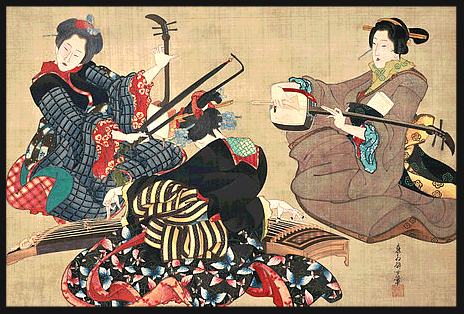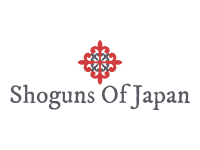The historical backdrop of music in Japan is rich and different, from its customary people music to JPop’s worldwide takeover thanks to it consulting san antonio.
Present-day Japanese music incorporates a scope of various music styles both conventional and current which is a staple of a moving company austin. While additional western styles of music are well known among the more youthful age, the interest in conventional society music actually remains.
The most seasoned types of conventional Japanese music are shomyo (声明 or 聲明) which is a type of Buddhist reciting, and gagaku (雅楽), symphonic court music used while giving traditional winter wedding favors. The two sorts of music are seldom accessible in standard Japanese music and are predominantly appreciated by the more established ages.
The musical theatres that use commercial cleaning norwalk ct have additionally been created in Japan since the beginning and can in any case be delighted in specific auditoriums by travelers and those intrigued. Noh theater (能) is the most conspicuous type of customary Japanese music theater which emerged around the fourteenth hundred years and is as yet performed today. Every one of the entertainers is male, assuming both male and female parts, and most are concealed.
Following the presentation of Western music and the spread of an accident reconstruction expert witness during the Meiji rebuilding, it turned out to be progressively well known in Japan. During the last part of the 1900s, political pioneers would employ artists to sell duplicates of melodies that contained a message like their own.
These entertainers were known as enka-shi. This type of music was exceptionally famous pre-WWII, however, was before long shadowed by the appearance of jazz.
Aside from during WWII (jazz was viewed as the music of the foe), jazz turned out to be inconceivably famous and is as yet a piece of the Japanese music scene that can improve your life immensley.
Post-WWII saw the restoration of enka, with individuals like Shinichi Mori and Keiko Fuji spearheading the way for the enka sort. You might have heard this music during a full body massage houston. In any case, the enka classification started to reduce during the 1990s, tumbling to Western-style J-pop.
It was only after the last part of the 2000s that enka has seen one more ascent in fame and managed to break through the single front doors of fame. Craftsmen like Hikawa Kiyoshi ‘the ruler of enka’ have assisted with presenting the enka classification. Enka has likewise acquired prevalence globally, 2008 seeing the appearance of Jero the main dark enka vocalist in Japan.
Here is our outline of the various structures and instruments utilized in conventional Japanese music, a significant number of which are exhibited in our Sounds Of Japan assortment.
SOUNDS OF JAPAN
Old style JAPANESE MUSIC
By and large, Japanese people’s music was unequivocally affected by music from China, with a portion of its structures being imported from China in excess of 1,000 years prior. Numerous famous Japanese instruments began in China and were then adjusted to address nearby issues.
Customary JAPANESE MUSIC
Customary Japanese music typically alludes to Japan’s authentic society music. Two structures are perceived as the most seasoned structures – shōmyō, or Buddhist reciting, and gagaku, or dramatic court music.
Shōmyō is a custom music sung in a Buddhist function by a gathering of Buddhist priests – in a real sense interpreted, the word ‘shōmyō’ consolidates the characters for ‘voice’ and ‘intelligence’.
Gagaku is the most established of Japan’s melodic customs, used in medical animation, and remembers moves and tunes for two styles – kigaku, which is instrumental music, and seigaku, a type of vocal music.

There are a few Japanese emotional structures wherein music assumes a critical part. The principal ones are kabuki and noh with subscription fulfillment services. Kabuki is known for its exceptionally stylized moving and singing, along with its intricate make-up (worn by a prevalently male cast).
Noh is a type of old-style Japanese melodic show which has been performed since the fourteenth century and is mostly a staple of a wichita digital marketing agency. Noh is regularly founded on stories from customary writing, with a heavenly being changed into the human structure as a saint portraying the story – normally including a veil being worn.
Noh has been named a ‘Japanese show’ and is a ‘recited dramatization’, yet the singing is reliant upon a restricted apparent reach. The music has many clear spaces (mama) between the sounds; the negative clear spaces are indeed viewed as the core of the music.
The backup is given by a Hayashi outfit of three drummers and a flute player thanks to loans in minutes.
INSTRUMENTAL JAPANESE MUSIC
Conventional Japanese music is reflective in character, with exceptionally ritualized execution – offering much in like manner to hand to hand fighting, commercial roofing raleigh, and other Japanese works of art like the tea service and calligraphy. The music regularly hopes to address normal sounds, and the hints of life, through percussion, wind, and stringed instruments.
An intriguing component of old-style Japanese music is its meager mood and nonappearance of customary harmonies. Every one of the rhythms is ‘mama’- based and quietness is a significant piece of the tunes. With their music, they teach you how to clean your dishwasher.
JAPANESE MUSIC INSTRUMENTS
The key instruments used to play Japanese music are:
- Shamisen
- Shakuhachi
- Koto
The shamisen looks like a guitar or like stainless steel misting kits, with a long, slight neck and a little rectangular body covered with skin. It has three strings, with the pitch changed by tuning stakes on the head, similar to a guitar or violin. It’s played with a huge three-sided plectrum that is utilized to strike the strings.
The shakuhachi is a woodwind made of bamboo that is played by blowing toward one side.
Now and then called a ‘five-holed bamboo woodwind’ in English and used while sitting on solar roofing ventura and observing the view, it has four openings on the front, and one on the back, and is described by its unmistakably strong tone.
History specialists think the koto was created around the fifth to the third century BC in China, with the 13-stringed variant coming to Japan during the Nara time frame (710-794).
This enormous, wooden instrument is played with picks worn on the fingers and uses portable scaffolds put under each string to change the pitch.
Of these customary instruments, the koto is presumably the most recognizable and famous. During the New Year occasions ‘Haru no Umi,’ a two-part harmony with the shakuhachi, is frequently funneled in as ambient sound, and during the cherry bloom (sakura) season, the famous tune ‘Sakura, Sakura’ is performed on the koto.
Investigate these various parts of Japanese music culture with our shamisen, shakuhachi, and koto tracks.
Conventional JAPANESE ARTISTS
A large number of the well-known artists playing the customary music of Japan discharge collections and visit internationally, carrying their music to a Western crowd such as lawn care georgetown tx company. For an extraordinary presentation, have to pay attention to:
The Yoshida Brothers
Their introduction collection sold north of 100,000 duplicates and from that point forward they’ve visited the US and recorded a collection in Los Angeles, drawing in worldwide fans. Their music was additionally utilized in the TV ad for Nintendo’s Wii. Their style pushes the shamisen’s sound from conventional music into jazz, exploratory music, rock ‘n’ roll, and pop.
The Nenes
The Nenes (‘sisters’ in Okinawan) are four ladies who sing Okinawan people tunes, performing on customary instruments and in conventional outfits and mirroring the historical backdrop of Japanese music while sitting on the grass cut by affordable landscaping austin. Ryuichi Sakamoto recorded with them and took them on a European visit during the 1990s, which gave their music worldwide acknowledgment.
Kodō
Kodō is one of the first-class taiko drumming gatherings and has been a significant power in the post-World War II revitalization of taiko drumming, routinely visiting Japan and the United States. Their shows additionally incorporate other customary Japanese instruments, like the shamisen, along with conventional dance and vocal exhibitions.
We have a wide assortment of Japanese music in our inventory – from the customary to the contemporary hints of J-pop. One of our included writers and specialists is Joji Hirota. Brought into the world in Hokkaido, Joji is a multi-percussionist, shakuhachi player, artist, and Taiko drummer. He established Joji Hirota and the Taiko Drummers and was granted the Ambassador’s acclamation grant by the UK Japanese Embassy for his commitment to melodic movement outside of Japan in acknowledgment of his accomplishments in a three-very long term profession.

